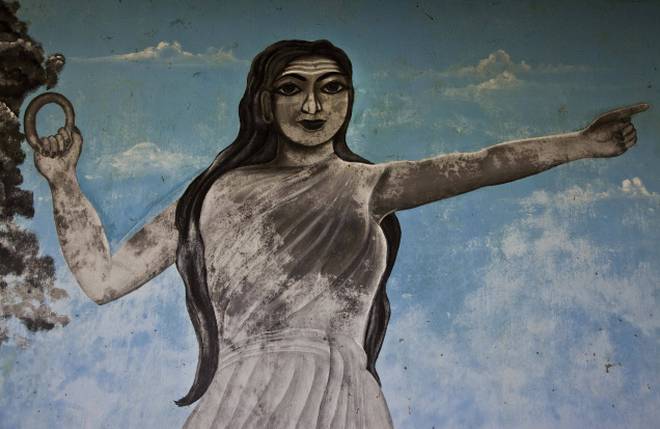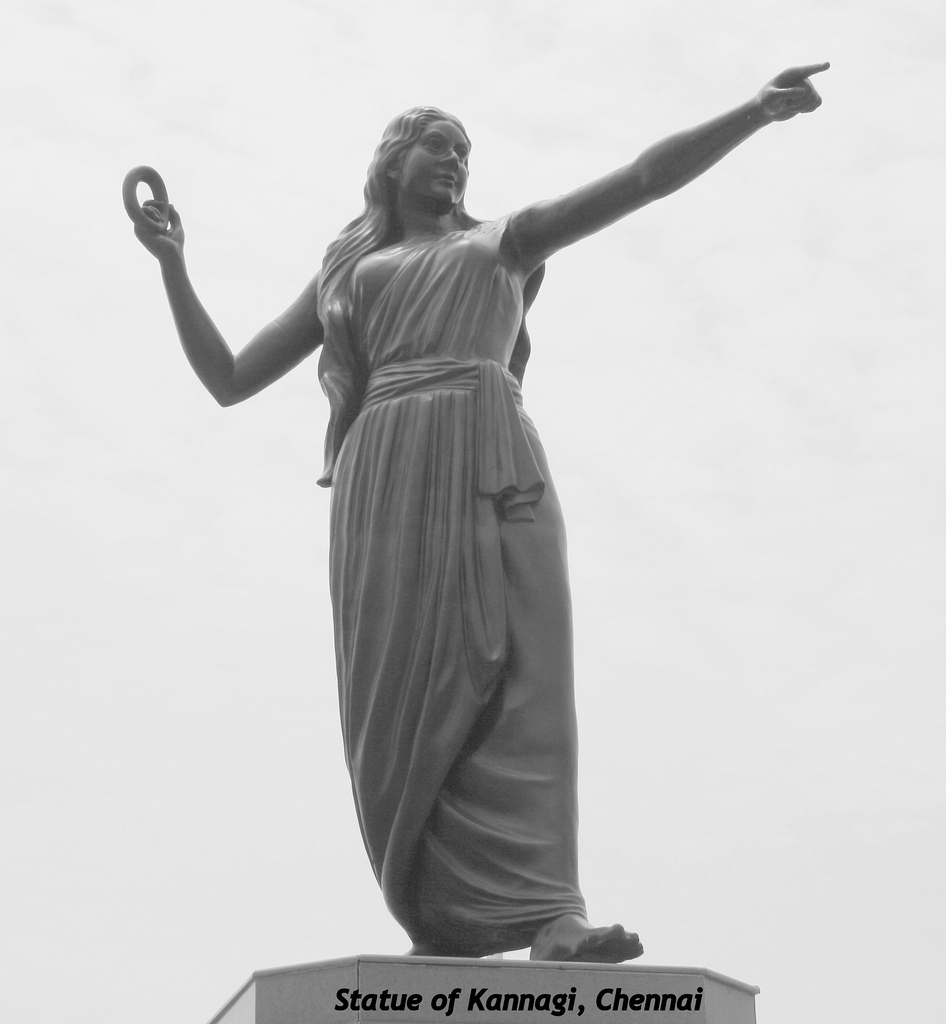Male-dominated narratives, male authors, and male-centered agency and priorities have been the norm throughout history, until the latter half of the 20th-century. So it’s no surprise that in ancient literature and epics, if you consider something like Homer’s Odyssey or other classics, even the Ramayana, the story of King Rama in early India, you see male authors telling the stories, adventures, and histories of men. In the Tamil literature of South India, however, we see something different. Guest Andrea Gutierrez introduces us to epic South Asian poems from the beginning of the first millennium that past the Bechdel test, when women’s narrative critiqued, cajoled, narrated, and provided guidance for the devout.
Guests
 Andrea GutierrezDoctoral Candidate in Asian Studies, The University of Texas at Austin
Andrea GutierrezDoctoral Candidate in Asian Studies, The University of Texas at Austin
Hosts
 Christopher RosePostdoctoral Fellow, Institute for Historical Studies, The University of Texas at Austin
Christopher RosePostdoctoral Fellow, Institute for Historical Studies, The University of Texas at Austin
Male-dominated narratives, male authors, and male-centered agency and priorities have been the norm throughout history, until the latter half of the 20th-century. So it’s no surprise that in ancient literature and epics, if you consider something like Homer’s Odyssey or other classics, even the Ramayana, the story of King Rama in early India, you see male authors telling the stories, adventures, and histories of men.
Curiously, we see something slightly different in early Tamil literature. Women play very prominent roles in all of the early Tamil epics, unlike most epics or ancient literatures of the world, where a woman often only is a romantic partner to the male lead, but has no role or agency of her own beyond that of wife or beautiful lover. So we see something atypical in the earliest period of Tamil poetry, the sangam period and in the early epics.
Can you contextualize a bit more of your discussion? Time/place
AG: Certainly. I’m talking about texts composed in what is today Southern India, basically in the area between Kanchipuram today, pretty near Chennai (formerly Madras), and going down to the southern tip of the peninsula of the subcontinent on mostly the eastern coast. This region also included what is today Kerala, ancient Cēra country, the southernmost part of India today. Interestingly, Tamil language is the only language of South Asia which is recognizable in the ancient literature as something that is still spoken more or less similarly today.
In ancient times, this area of South India, while it had seen rule in parts of it by Aśoka during the Mauryan empire, largely had regional rulers and kingdoms, which were often very powerful empires themselves like the Satavahanas, an Andhra/Deccan kingdom, or the Tamil region’s own rulers, as in the Pandyan kingdoms, the Cōḻa empires, the Cēra in the far south, and so on, as well as minor kings who ruled in times of power vacuums.
What is this sangam?
Sangam is the ancient period of poetic composition, probably dating to the 1st and 2nd centuries CE, mostly the 2nd c. It was named after the sangams, the academies of writers and scholars that were associated together. Sangam literature very frequently features poems about women speaking to other women, and they were often even composed by women. In fact, in the vast majority of romantic poetry in ancient Tamil—the akam poems they are called—male poets (or anonymous poets) put themselves into female roles and penned the voices of heroines, female protagonists, who would be speaking and reciting the poems. We see very different dynamics at play than in most of the world literatures, ancient or modern, although I’m not going to pretend to you that these were feminist works in a feminist era. Today I’m talking in part about this mostly 2nd c. common era sangam poetry, which was often composed as entertainment for kings who were patrons of the poets. I’ll also talk about two of the five great epics in Tamil, the Cilappatikāram, probably written in the mid-5th c. CE, and the Maṇimēkalai, probably composed mid-6th c. CE, give or take a bit.
And why or how were women prominent in this literature?
OK. Let’s take something that’s widely used today to test the prominence of women in
media: you might know about the Bechdel test, which has been widely adopted in the last 5 or ten years as a way to evaluate films, video games, graphic novels, and media more broadly. The Bechdel test is interesting because it’s data-oriented, so it can give us some structural criteria to evaluate a text’s orientation as female-supporting or otherwise, by determining if the text expresses some social form of women’s agency.
And what is the test?
The test asks 3 simple questions: One.) Does this text or medium have at least 2 females in it? Two.) Do they talk to each other? and Three.) Do they talk about something other than a man? So, this test is in widespread use today for film critique, especially popular in European cinema boards, but also commonly used in the US, even by Entertainment Weekly.
It’s shocking that even today, with movies released in recent years, say, almost half of film releases fail this simple test! Even today in the US, which is supposedly quite pro-women, we don’t see female characters with names who have some role in a film that isn’t as sexual interest or entertainment, or concerning the woman’s beautiful body, and so on. Anyway, a number of scholars in computer science today are developing programs to apply the Bechdel test to all sorts of media and are using it for literary history as well.
And how does the test play out with ancient Tamil literature and female social agency in history?
Not so bad, but not as good as I had expected given such prominence of women through all of sangam poetry. Discounting the war poems, a majority of the poetry is composed in women’s voices. And most often they are speaking to other women. But the sangam poems don’t often pass the third question of the Bechdel test: that is, women talking about something other than a man. Actually mostly they do pass the test: women are describing their emotional experiences, but these feelings and thought are often a result of what men have done to them: leaving them for work, having left to another woman, and so on. So, on the surface they appear to pass the test and do express women’s innermost feelings oftentimes without mentioning a man; technically most pass the test. But under the surface, the woman’s state is a result of a man’s behavior. So they pass, but not entirely. This surprised me, but only so much.
But didn’t you say earlier that many of these poems were composed by women
themselves?
Yes! It is exceptional to have such a large part of the corpus of any historical literature written by women! One of the most prolific sangam poets of ancient times, the 9th most prolific, was a woman, Auviyār. She composed 59 of the 2200 odd poems, so something like 2 or 3% of the total corpus. And there were other female poetesses as well, at least 20 female poets that we know for certain by name and possibly up to 40, with names which might be female or not, since many are pen names. Plus many poems are anonymous, so in reality many more might have been written by women.
Who is this poet you just mentioned?
Auviyār is particularly interesting. She lived from about 150-220 CE. She belonged to the Viṟaliyar caste of dancers and singers who at the time were very highly respected. Her dating is quite certain because she wrote to entertain a minor king, under whose patronage she was, and she seems to have been quite good friends with him, she would eat and drink with him and so on. He was Atikamāṉ Neṭumāṉ Añci of Takaṭūr, an opponent of the Cēra monarch at the time. Anyway, we often get little snippets of information about the historical lives of poets or of regional kings or of historical events from the poems themselves.
Remember, by about the end of the 2nd c. CE, the great Mauryan empire in India made so powerful by Aśoka had all but ended, the Ramayana was in the form that we know it today, the Laws of Manu, a famous Indian text of religious law was complete in the form in which we know it today. In the 2nd c. CE, during Auviyār’s lifetime, the Cēra dynasty, as mentioned in the Ramayana, ruled in far southern India, the Pandyas ruled in the middle of what is Tamil Nadu today, even the earliest Cōḻas, who became very powerful much later, were certainly ruling a little farther north by the beginning of the 2nd c. CE and throughout that century for sure. We find snippets about these dynasties and about people’s daily lives in the sangam poems.

You sounded optimistic about women’s agency in early Tamil literature, though…
And I still am! A little later, a few centuries after the ancient sangam period ended, we see the creation of the great epic poems written in Tamil, of which there were 5. The two earliest, which are the best preserved intact, both have strong female heroines, although the epics were written by men. The male counterparts for these heroines are much weaker characters, much less prominent in the narrative, although they also certainly have agency in the epics.
The first epic, Cilappatikāram, dating to around 450 CE, has a very strong female protagonist: Kaṇṇaki. Kaṇṇaki is the wife of rich merchant Kōvalaṉ, who had abandoned Kaṇṇaki for the beautiful and talented dancing girl, Mātavi, with whom he has a daughter. Now Kōvalaṉ had bought the dancing girl, Mātavi, they’d fallen in love, and he ended up squandering his fortune on his life with her. When he realizes his mistake and returns to his wife Kaṇṇaki, now very poor. Kaṇṇaki gives him one of her precious jewel anklets to sell for them to make ends meet. He goes to Madurai to market to sell the anklet and there people mistake this anklet for one that had been recently stolen from the king of Madurai, a Pandyan king. They accuse Kōvalaṉ of stealing from the king and some drunken royal soldiers end up chopping off his head as they think he’s wanted for the crime. Then Kaṇṇaki finds out her husband has been killed in this dissolute and indulgent city of Madurai, filled with debauchery, and that he was killed unlawfully and unrighteously—
This implies that the king was doing a bad job in his rule and execution of law?
Yes, you see a lot of critique of poor kingship in literature. So Kaṇṇaki curses the city,
tears off her breast, throws it at the city and it starts on fire at her command (she allows good men, cows, truthful women, cripples, and children to survive, she’s a softy). Eventually a chariot comes and takes her to heaven, her apotheosis really, and she’s deified as a goddess.
Certainly sounds like female-driven narrative but does this work pass the Bechdel test?
It does! There are numerous female characters who talk to each other. Of course they’re often talking about men, but in at least 4 passages women talk to other women about something besides a man, and not in response to what a man might have done in another episode of the epic. The bulk of conversations do still revolve around men or are stories about historic men of lore, though…
You mentioned two epics.
The work following this one, the Maṇimēkalai, is named after the daughter born of
Kōvalaṉ (from the first epic) and the dancing girl Mātavi. This epic, Maṇimēkalai, being
Buddhist, totally rejects romantic love. Mātavi and her daughter Maṇimēkalai decide that Maṇimēkalai, a pre-teen, should join the Buddhist nunnery and renounce all men and worldly living. This epic is even more exciting from the standpoint of the Bechdel test in that, as a nun, Manimekalai has rejected human passion and men, and has dedicated her life to other things. She has another calling than being a wife to a man; she feeds the hungry in Kāñci during the long famine and serves there.
You’re mentioning moments in history from these epics; but these are fictional narratives, correct?
Yes and no. The epics are largely not based on history as we understand the lineages of kings and dynasties in South India. But some of the legendary kings revered in sub-stories in these epics were real kings in South India. For example, the Cilappatikāram mentions “Kayavāku, the king of the seagirt Ceylon.” This king was Gajabāhu the 1st, who ruled from 171-193CE in what is today Sri Lanka. This same epic also mentions Cēra king Ceṅkuṭṭuvaṉ, who ruled some 55 years, from 170-225CE. These kings were already history at the time of writing the Cilappatikāram and the Maṇimēkalai, but these epics are historical recordings of the kings from their own past, in the same way that anyone today who writes about past kings centuries after the fact writes “history”, as we call it. These are just embedded in very entertaining and beautiful stories.

Are these stories still told?
Everyone in Tamil Nadu today knows Auviyār, as well as two of the historical female poets who followed her and took the same name. She’s very famous, and appears in everything from calendars to movies to posters in buses. And Kaṇṇaki is revered all across Tamil Nadu even today; there are shrines for her in temples and entire temples dedicated to Kaṇṇaki Amman. Even in Sri Lanka she’s worshipped by the Buddhists as Pattini, and in Kerala as Bhagavati, so ideas about her have permeated South Indian Hinduism and South Asian Buddhism. She’s very much alive in the popular consciousness and has been for over a millennium, for sure, although the actual historical kings from the Cilippatikāram are, sadly, virtually unknown almost anywhere you go.
For this podcast I’ll include links so you can see the goddess as she’s worshipped today, as well as links to some nice translations of the epics; they’re not too long and make great reading!
- Cilippatikaram (The Bracelet Prince)
- Manimekalai (The Dancer with the Magic Bowl)
- Silappadikaram and Manimekalai (Illustrated Color Classics)
Modern renderings of Kaṇṇaki:
- “Celebrating Kannaki” – The Hindu
- Kaṇṇaki’s appearance as worshipped in temples today: https://en.wikipedia.org/wiki/Kannaki_Amman
English Translations of sangam poetry: